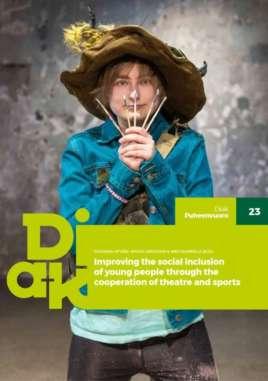
Improving the social inclusion of young people through the cooperation of theatre and sports
The youth groups of the Participatory Sporty Theatre project combined culture and sports in an informal setting. This publication describes how the young participants were able to discover new sides and strengths of themselves and get engaged in the group activities.
“I think that this is for everyone, because it’s good for people to let go, and especially people who live in Finland. Everyone who wants more playfulness in their lives and ways of doing things.” – Feedback on group activity
The experience of inclusion and life’s meaningfulness comes from interacting with other people. A communal experience and sense of belonging can also benefit people in other areas of life. The youth groups of the Participatory Sporty Theatre project combined culture and sports in an informal setting. This publication describes how the young participants were able to discover new sides and strengths of themselves and get engaged in the group activities. The groups were coordinated by theatre and sports professionals, and the activities were centred around action, self-expression and interpersonal encounters.
The publication is aimed at youth work professionals and anyone with an interest in promoting youth participation. It also features action-based exercises that can be used in youth work settings to support group forming, or as improvisation and emotional expression exercises.
The publication is the final report of the Participatory Sporty Theatre project. The project ran from 2016 to 2019 and was coordinated by Diaconia University of Applied Sciences. Other participating organisations were Kainuun Liikunta ry, Kajaani City Theatre, Loisto setlementti ry, Q-teatteri ry and WAU ry. The project received funding from the European Social Fund.
Julkaisun tiedot

Improving the social inclusion of young people through the cooperation of theatre and sports
Diak Puheenvuoro Toimittaja: Susanna Hyväri, Marja Lindholm, Niko Nummela URN: Julkaisun pysyvä osoite ISBN: ISBN 978-952-493-332-2